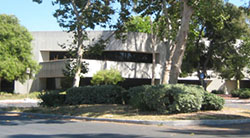
If you suspect your child is gifted and talented above the norm, then he or she must be tested. Numerous types of educational testing have been developed to measure and assess the United States government’s most valued characteristics of creativity, leadership, academic superiority, intellectuality and artistic ability. Which test, however, is best? They are all quantitative instruments that use scores to rate your child and measure him or her against others who have taken the tests. There are several types of quantitative tests your child can take to determine whether he or she is, in fact, gifted above others.
Ability Tests
These particular tests, which include intelligence quotient and cognitive ability measurements, are valued assessment tools for determining superior intelligence and intellectual ability. These tests include:
- Woodcock Johnson
- Stanford Binet (L-M)
- Wescher Intelligence Scale for Children, 4th Edition
There are also group-style ability tests to determine whether or not a child has superior qualities. They include:
- Matrix Analogies Test
- Otis-Lennon
- Hemmon-Nelson
- CogAT
- Ravens Progressive Matrices
There are even nonverbal ability tests available. Two such tests that are popular are the Naglieri Nonverbal Ability Test and the Test of Nonverbal Intelligence.
Achievement Tests
This type of test determines what your child has already learned and measures whether he or she is superior to others in their grade levels. There are two types of achievement tests:
- Tests specific to an academic area (i.e. mathematics or language arts)
- Standardized assessments (i.e. SATs, SRA, ITBS or MATs)
Achievement tests specifically designed to determine whether or not a child is gifted include the Screening Assessment for Gifted Elementary Students (SAGES) and Test of Mathematical Abilities for Gifted Students.
Researchers in the area of gifted and talented children generally agree that it is best to wait to do educational testing and achievement assessments until at least six years of age.




